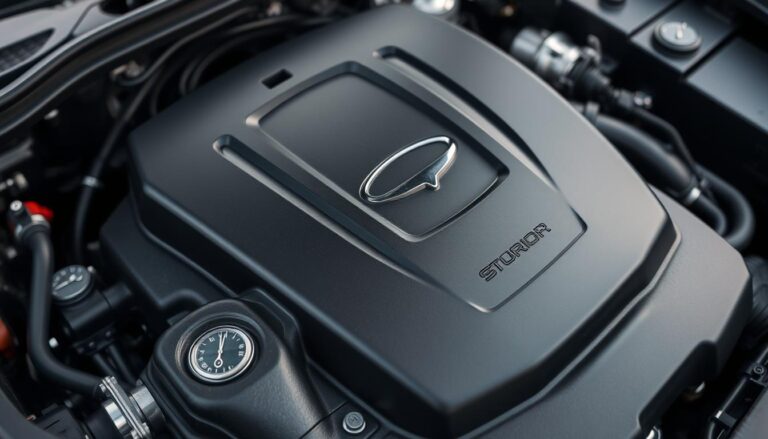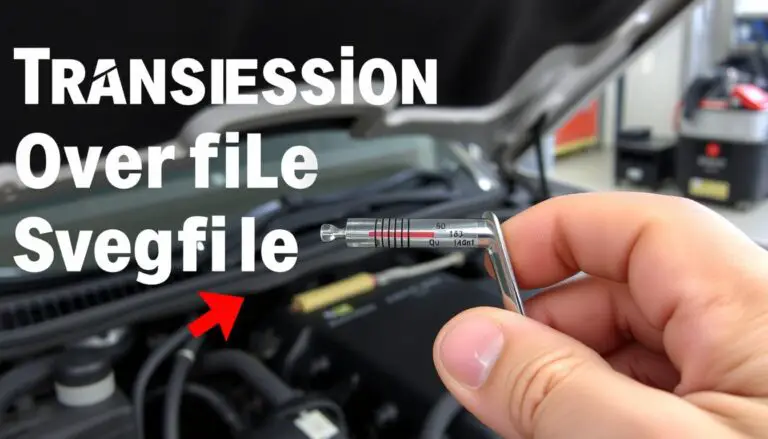A rack and pinion leak can significantly compromise your vehicle’s steering system, leading to difficulties in handling and potentially causing accidents. Understanding the causes and implementing effective solutions is crucial for maintaining your vehicle’s performance and safety.
The power steering fluid plays a vital role in the functioning of the steering system. A leak in the rack and pinion system can lead to a drop in fluid levels, resulting in stiff steering and increased risk of damage to the system.
For those facing issues with their vehicle’s steering, it’s essential to diagnose the problem accurately. For instance, if you’re dealing with a Toyota Tacoma, you might want to check the cost of replacing the rack and as part of your repair considerations.
Key Takeaways
- Identify the signs of a rack and pinion leak early.
- Understand the role of power steering fluid.
- Learn about the potential damage a leak can cause.
- Explore solutions for repairing a rack and pinion leak.
- Consider the cost implications of repairs.
Understanding the Rack and Pinion Steering System
Understanding the intricacies of the rack and pinion steering system is essential for diagnosing and repairing common issues like leaks. The rack and pinion system is a critical component of a vehicle’s steering mechanism, converting the rotational motion of the steering wheel into the linear motion needed to turn the vehicle’s wheels.
What is a Rack and Pinion System?
A rack and pinion system consists of two main components: the rack and the pinion. The pinion is a gear wheel that engages with the rack, a linear gear with teeth. When the steering wheel is turned, it rotates the pinion, which then moves the rack left or right, thereby steering the wheels.
How the Rack and Pinion System Works
The operation of the rack and pinion system is straightforward. As the driver turns the steering wheel, the rotational force is transmitted to the pinion. The pinion’s rotation causes the rack to move linearly, and this movement is transferred to the steering linkage, which then turns the vehicle’s wheels. The system’s design ensures a direct and responsive steering experience.
Common Components Vulnerable to Leaks
Several components within the rack and pinion system are prone to leaks, including seals and O-rings, which can deteriorate over time due to wear and tear, heat, and pressure. The rack housing and fittings are also susceptible to damage, leading to potential leak paths.
| Component | Vulnerability to Leaks | Common Causes |
|---|---|---|
| Seals and O-rings | High | Wear and tear, heat, pressure |
| Rack Housing | Moderate | Impact damage, corrosion |
| Fittings and Connections | Moderate | Loose connections, vibration |
Signs of a Rack and Pinion Leak
Recognizing the signs of a rack and pinion leak is crucial for maintaining your vehicle’s steering system. A leak can lead to various symptoms that, if identified early, can prevent more severe damage and costly repairs.
Fluid Puddles Under the Vehicle
One of the most obvious signs of a rack and pinion leak is the presence of fluid puddles under your vehicle. If you notice a puddle of reddish or brownish fluid, it could indicate a leak in the power steering system. This fluid is essential for the smooth operation of your steering, and a leak can compromise the system’s integrity.
Difficulty Steering
Difficulty steering is another common symptom. If your vehicle’s steering feels heavier than usual or if you’re experiencing resistance when turning, it might be due to a leak in the rack and pinion system. This is because the power steering fluid plays a crucial role in assisting the steering mechanism.
Unusual Noises When Turning
Unusual noises, such as whining or groaning sounds when turning, can also indicate a rack and pinion leak. These noises are often a result of the power steering pump working harder due to low fluid levels.
Steering Wheel Vibration
Steering wheel vibration is another sign that something is amiss. If the fluid level drops due to a leak, it can cause the steering pump to work under stress, leading to vibrations felt through the steering wheel.
Decreased Power Steering Fluid Levels
Regularly checking your power steering fluid levels can help you identify a potential leak. If you notice that the levels are consistently lower, it may indicate a leak in the rack and pinion system.
Rack and Pinion Leak: Common Causes and Their Solutions
Understanding the root causes of a rack and pinion leak is crucial for effective repair. A rack and pinion system is complex, with multiple components that can fail and lead to leaks.
Worn Seals and Gaskets
Worn seals and gaskets are a primary cause of rack and pinion leaks. Over time, these components can deteriorate due to wear and tear, allowing fluid to escape. Replacing worn seals and gaskets is a common repair option that can resolve the issue.
Damaged Rack Housing
Damage to the rack housing can also cause leaks. This damage can result from accidents or road debris. In such cases, repairing or replacing the damaged housing is necessary to stop the leak.
Loose Fittings and Connections
Loose fittings and connections can lead to leaks by allowing fluid to escape. Tightening these fittings can often resolve the issue. Regular checks can help identify loose connections before they cause significant problems.
Impact Damage
Impact damage from accidents or potholes can compromise the integrity of the rack and pinion system, leading to leaks. Assessing the damage and undertaking necessary repairs is crucial.
Fluid Degradation and Its Effects
Fluid degradation can affect the performance of the rack and pinion system, potentially leading to leaks. Regular fluid checks and changes can help prevent degradation and maintain system health.
By understanding the common causes of rack and pinion leaks and their solutions, vehicle owners can take proactive steps to address these issues, whether through DIY repair or professional assistance.
Diagnosing a Rack and Pinion Leak
Effective diagnosis of a rack and pinion leak is crucial for a successful DIY repair. Diagnosing the issue accurately helps in applying the correct fix, thereby saving time and resources.
Tools Needed for Proper Diagnosis
To diagnose a rack and pinion leak, you’ll need a set of basic tools including a socket set, wrenches, and a fluid pump. Additionally, a UV dye kit and a pressure tester are essential for identifying leaks.

Visual Inspection Process
Begin with a visual inspection of the rack and pinion system. Look for signs of leakage around the seals and gaskets. Check the power steering fluid level and condition, as degraded fluid can indicate internal leaks.
Pressure Testing
Pressure testing involves pressurizing the power steering system to identify leaks. This method is effective for detecting leaks that are not visible during a visual inspection.
Using UV Dye to Locate Leaks
UV dye testing is a precise method for locating leaks. The process involves adding UV dye to the power steering fluid, then using a UV light to inspect the system for signs of leakage.
Step-by-Step UV Dye Testing
First, ensure the power steering system is filled with the recommended fluid. Then, add the UV dye and circulate it through the system by turning the steering wheel. Finally, inspect the system with a UV light to identify any leaks.
Interpreting Results
When interpreting the results of the UV dye test, look for areas where the dye has escaped. This will indicate the location of the leak. Take note of the severity and location to determine the appropriate repair.
DIY Repair Options for Rack and Pinion Leaks
When faced with a rack and pinion leak, many vehicle owners consider DIY repair options to save on costs and gain hands-on experience. Before starting, it’s crucial to understand the steps involved and the safety precautions necessary for a successful repair.
Safety Precautions Before Starting
Before diving into the repair, ensure you’re wearing protective gear, including gloves and safety glasses. It’s also essential to work in a well-ventilated area, away from any open flames or sparks.
Replacing Seals and O-rings
Replacing seals and O-rings is a common DIY repair for rack and pinion leaks. This involves:
Tools and Materials Needed
- A socket set
- O-ring and seal replacement kits
- Power steering fluid
Step-by-Step Replacement Process
- Disconnect the steering rack from the steering column.
- Remove the old seals and O-rings.
- Install new seals and O-rings, ensuring they’re properly seated.
Tightening Loose Connections
Sometimes, a leak can be attributed to loose connections. Inspect the system for any loose fittings and tighten them according to the manufacturer’s specifications.
Using Stop Leak Products: Pros and Cons
Stop leak products can be a temporary fix but may not address the underlying issue. Weigh the pros and cons before deciding to use these products.
Refilling Power Steering Fluid
After repairs, refilling the power steering fluid is crucial. Choosing the right fluid type is vital for the system’s longevity.
Choosing the Right Fluid Type
Consult your vehicle’s manual to determine the correct type of power steering fluid to use.
Proper Filling Procedure
Follow the manufacturer’s guidelines for filling the power steering reservoir, and ensure not to overfill.
| Repair Task | Tools Needed | Skill Level |
|---|---|---|
| Replacing Seals and O-rings | Socket set, O-ring kit | Intermediate |
| Tightening Loose Connections | Wrench set | Beginner |
| Refilling Power Steering Fluid | Funnel, Power steering fluid | Beginner |
When to Replace the Entire Rack and Pinion Assembly
Determining when to replace the entire rack and pinion assembly is crucial for maintaining your vehicle’s steering system. A faulty rack and pinion can lead to significant safety issues and costly repairs if not addressed promptly.

Signs of Severe Damage
Severe damage to the rack and pinion assembly can manifest in several ways. If you notice significant leaks around the steering rack, it may be a sign that the assembly is beyond repair. Other indicators include excessive play in the steering wheel, unusual noises when turning, and difficulty steering. In such cases, replacing the entire assembly might be the most cost-effective solution in the long run.
Cost Considerations: Repair vs. Replacement
When faced with a faulty rack and pinion, one of the primary considerations is the cost of repair versus replacement. While repairing the existing system might seem cheaper upfront, it’s essential to consider the long-term benefits of replacement. For more detailed information on the costs associated with steering rack and pinion repair or replacement, consulting a reliable automotive resource can provide valuable insights.
Choosing Quality Replacement Parts
If replacement is necessary, choosing high-quality parts is crucial. OEM (Original Equipment Manufacturer) parts or reputable aftermarket alternatives can ensure that your new rack and pinion assembly performs well and lasts longer. It’s also important to consider the warranty offered by the manufacturer, as it can provide peace of mind and protection against future defects.
Professional Installation vs. DIY Replacement
Deciding between professional installation and DIY replacement depends on your comfort level with complex automotive repairs and the specific requirements of your vehicle. While DIY can save on labor costs, professional installation ensures that the job is done correctly and safely, potentially saving you from future complications.
Preventative Maintenance to Avoid Future Leaks
A well-maintained steering system is less likely to experience leaks. By adopting a proactive approach, you can significantly extend the life of your rack and pinion system.
Regular Fluid Checks and Changes
Checking your power steering fluid regularly is crucial. Low fluid levels can lead to increased pressure on the system, potentially causing leaks. Change the fluid as recommended by your vehicle’s manufacturer to keep the system lubricated.
Inspecting for Early Signs of Wear
Regular inspections can help identify potential issues before they become major problems. Look for signs of wear on seals, gaskets, and other components.
Driving Habits That Protect Your Steering System
Avoiding extreme driving conditions and habits can help reduce the strain on your steering system. This includes avoiding potholes and not overloading your vehicle.
Seasonal Maintenance Considerations
Different seasons can affect your vehicle’s steering system in various ways. For example, extreme temperatures can affect the viscosity of your power steering fluid. Adjust your maintenance routine accordingly to ensure the system remains functional.
Conclusion
A rack and pinion leak can significantly impact your vehicle’s steering system, leading to safety issues and costly repairs if not addressed promptly. Understanding the causes and solutions to such leaks is crucial for maintaining a healthy steering system.
By recognizing the signs of a rack and pinion leak, such as fluid puddles under the vehicle or difficulty steering, you can take proactive steps to diagnose and repair the issue. Regular maintenance, including fluid checks and inspections for wear, can help prevent future leaks.
Whether you choose to repair or replace the rack and pinion assembly, it’s essential to prioritize quality parts and professional installation to ensure the longevity of your vehicle’s steering system. By doing so, you can maintain a safe and responsive driving experience.
FAQ
What are the common signs of a rack and pinion leak?
Common signs include fluid puddles under the vehicle, difficulty steering, unusual noises when turning, steering wheel vibration, and decreased power steering fluid levels.
How do I diagnose a rack and pinion leak?
Diagnosing a rack and pinion leak involves a visual inspection, pressure testing, and using UV dye to locate leaks. The necessary tools and step-by-step instructions are crucial for an accurate diagnosis.
Can I repair a rack and pinion leak myself?
Yes, DIY repair options are available, including replacing seals and O-rings, tightening loose connections, and using stop leak products. However, it’s essential to follow safety precautions and proper procedures.
When should I replace the entire rack and pinion assembly?
Replacement is necessary when there are signs of severe damage, and the cost of repairs outweighs the cost of a new assembly. Choosing quality replacement parts and considering professional installation are also important factors.
How can I prevent future rack and pinion leaks?
Preventative maintenance includes regular fluid checks and changes, inspecting for early signs of wear, adopting protective driving habits, and considering seasonal maintenance.
What type of power steering fluid should I use?
The correct fluid type depends on the vehicle’s manufacturer specifications. It’s essential to choose the right fluid to ensure the longevity of the steering system.
Can impact damage cause a rack and pinion leak?
Yes, impact damage can cause a rack and pinion leak by damaging the rack housing or dislodging fittings and connections.
How often should I check my power steering fluid levels?
Regular checks are recommended, ideally during routine maintenance or when signs of a leak are noticed.


